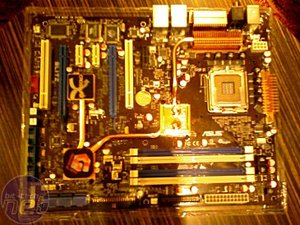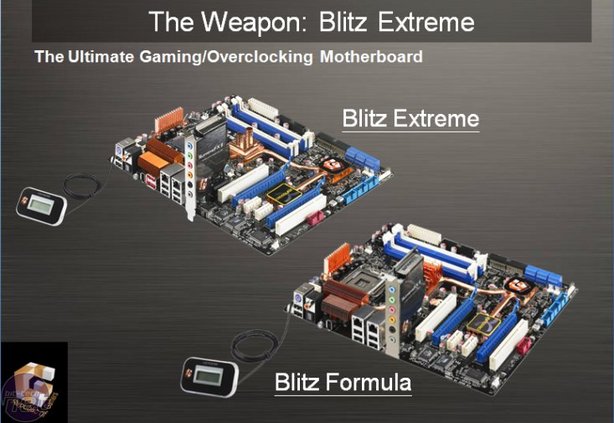Asus:
We didn’t have chance to pop along to Asus’ headquarters during our time here; instead, we met with PR managers, product managers and R&D engineers from the company in a snazzy restaurant near to Taipei’s Warner Village, which is in the shadows of the world’s tallest building, Taipei 101.Gaming Blitz

apologies for the poor quality photo - we'll get some better shots of the board during the show
Asus talked to us about its next additions to the Republic of Gamers series. At CeBIT, we saw a board called “Sauternes”, which we were told would be the next RoG board at the time. However, the Republic of Gamers product manager explained to us that the Sauternes design was simply a concept and Asus often does this to try out new ideas for its RoG series of motherboards.
This brings us onto the new Republic of Gamers boards – enter Blitz Extreme and Blitz Formula. Both boards are based on Intel’s P35 Express chipset but they’re a far cry from “just another couple of Bearlake boards”. First let’s get the major differentiating factor out of the way before we get onto the cooler stuff. Blitz Extreme supports upto 8GB of DDR3 memory at speeds up to 1333MHz, while Blitz Formula supports the more affordable DDR2 memory at speeds up to 1066MHz (officially).

Asus has got around this with its Crosslinx technology, which splits the x16 lane from the P35 northbridge into two x8 lanes, thus removing the potential bottlenecks caused by the x16/x4 north/south bridge combination. Asus claims that it should amount to a ten percent performance improvement in 3DMark06, but we’re not sure how it’s going to affect real games – we’ll have to see as soon as we get one of the boards in the bit-tech labs.

MSI MPG Velox 100R Chassis Review
October 14 2021 | 15:04









Want to comment? Please log in.